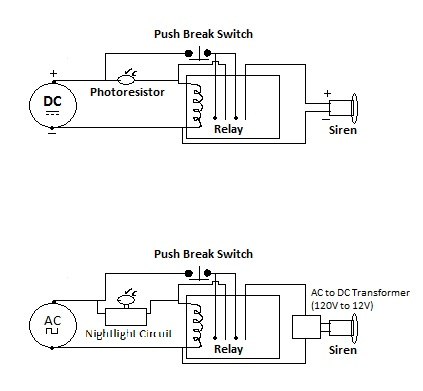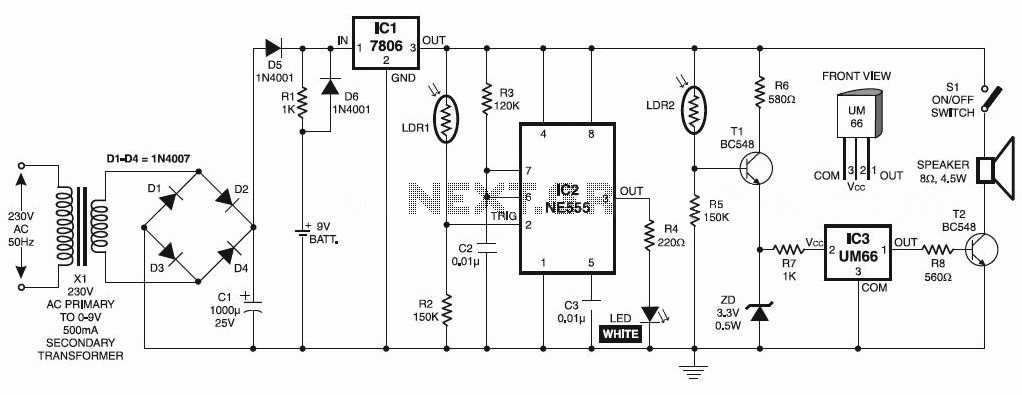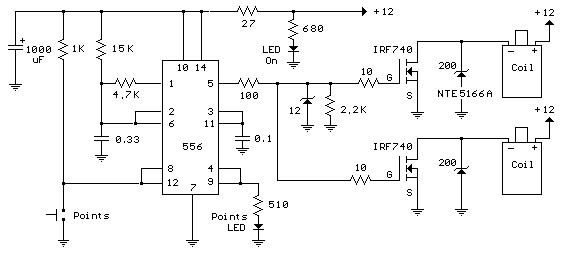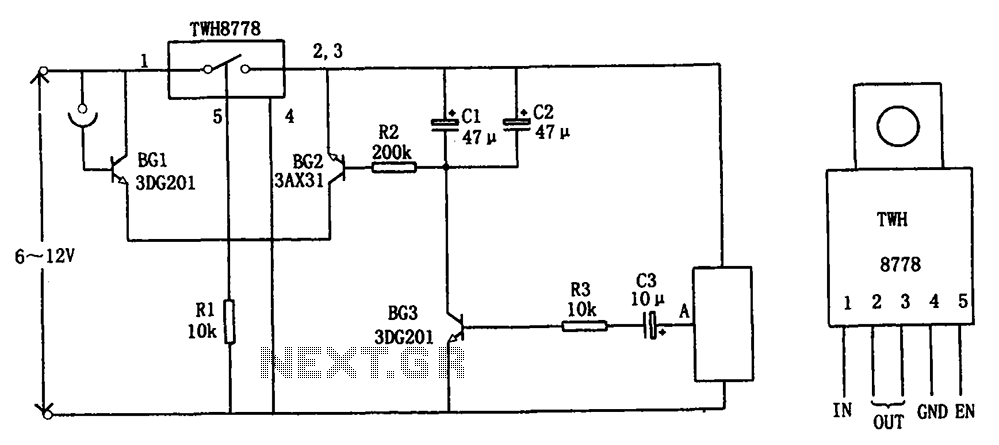
Auto Alarm
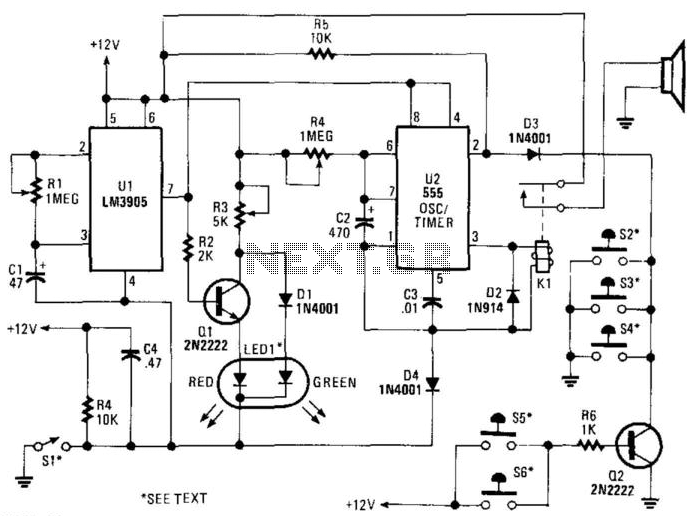
SI is an external key switch. The alarm allows a delay of 0 to 45 seconds after SI is operated before the circuit is armed. During this period, LED1 lights up green. After this delay, LED1 lights red, indicating that the circuit is armed. Then, sensors S2 through S4 (normally open) or S5 through S6 (normally open) pull pin 2 of U2 low, which activates K1 and triggers the alarm. The alarm sounds for a duration determined by R4 and C2. After this time, K1 releases and the circuit is again ready. Manual reset is via the key switch, SI.
The described circuit functions as a security alarm system controlled by an external key switch (SI). The initial operation of SI initiates a programmable delay period ranging from 0 to 45 seconds, allowing users to enter a secure area without triggering the alarm. During this interval, LED1 serves as a visual indicator, illuminating in green to signify that the system is in a standby state.
Once the delay period elapses, LED1 changes to red, signaling that the alarm system is now armed. This change in LED color is crucial for user awareness, ensuring that individuals are informed of the system's status. The system employs multiple sensors (S2 through S4 and S5 through S6), all configured as normally open (NO) contacts. When any of these sensors detect an intrusion by closing the circuit, they pull pin 2 of the operational amplifier (U2) low. This action triggers relay K1, which activates the alarm.
The alarm's duration is adjustable and is determined by the values of resistor R4 and capacitor C2, which form an RC timing circuit. The time constant of this circuit dictates how long K1 remains activated, thus controlling the length of time the alarm sounds. After the predetermined time has elapsed, K1 is deactivated, returning the circuit to its initial state and preparing it for subsequent operations.
To reset the system manually, the user must operate the key switch (SI) again. This feature enhances the security of the system, ensuring that unauthorized access cannot easily reset the alarm without the appropriate key. Overall, this alarm system design effectively integrates user control and security features, providing a reliable solution for intrusion detection. SI is external key switch. The alarm allows a 0- to 45-s delay after SI is operated before the circuit is armed. During this per iod, LED1 lights green. After this delay, LED1 lights red, which indicates that the circuit is armed. Then, sensors S2 through S4 -(NO) or S5 through S6 (NO) pull pin 2 of U2 low, which activates K1 and sounds the alarm. The alarm sounds for a duration determined by R4 and C2. After this time, K1 releases and the circuit is again ready. Manual reset is via the key switch, SI.
The described circuit functions as a security alarm system controlled by an external key switch (SI). The initial operation of SI initiates a programmable delay period ranging from 0 to 45 seconds, allowing users to enter a secure area without triggering the alarm. During this interval, LED1 serves as a visual indicator, illuminating in green to signify that the system is in a standby state.
Once the delay period elapses, LED1 changes to red, signaling that the alarm system is now armed. This change in LED color is crucial for user awareness, ensuring that individuals are informed of the system's status. The system employs multiple sensors (S2 through S4 and S5 through S6), all configured as normally open (NO) contacts. When any of these sensors detect an intrusion by closing the circuit, they pull pin 2 of the operational amplifier (U2) low. This action triggers relay K1, which activates the alarm.
The alarm's duration is adjustable and is determined by the values of resistor R4 and capacitor C2, which form an RC timing circuit. The time constant of this circuit dictates how long K1 remains activated, thus controlling the length of time the alarm sounds. After the predetermined time has elapsed, K1 is deactivated, returning the circuit to its initial state and preparing it for subsequent operations.
To reset the system manually, the user must operate the key switch (SI) again. This feature enhances the security of the system, ensuring that unauthorized access cannot easily reset the alarm without the appropriate key. Overall, this alarm system design effectively integrates user control and security features, providing a reliable solution for intrusion detection. SI is external key switch. The alarm allows a 0- to 45-s delay after SI is operated before the circuit is armed. During this per iod, LED1 lights green. After this delay, LED1 lights red, which indicates that the circuit is armed. Then, sensors S2 through S4 -(NO) or S5 through S6 (NO) pull pin 2 of U2 low, which activates K1 and sounds the alarm. The alarm sounds for a duration determined by R4 and C2. After this time, K1 releases and the circuit is again ready. Manual reset is via the key switch, SI.
